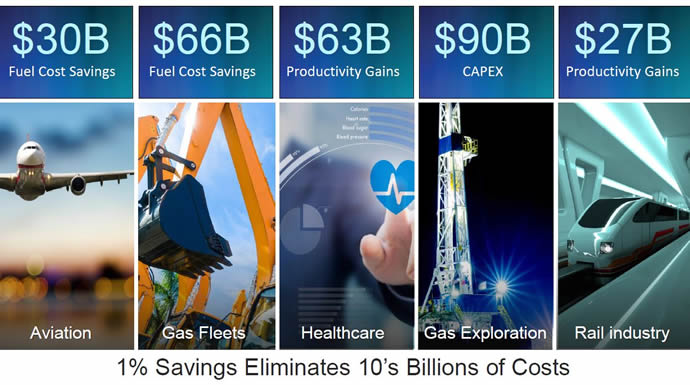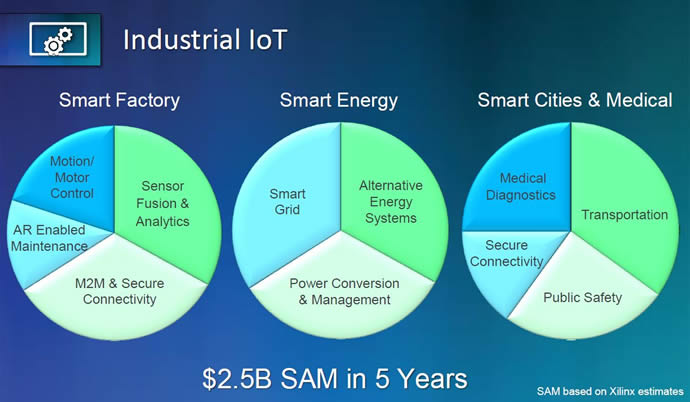Cost optimised portfolio targets vision and IIoT
Electronic Specifier Editor Joe Bush talks to Steve Glaser, SVP Corporate Strategy & Marketing at Xilinx about the most recent changes at the company that have brought about its latest product offering.
There has been a dramatic level of visible change at Xilinx over the last few years with the company expanding from its more traditional FPGA roots which served around 50,000 hardware engineers around the world. While this approach served the company well it meant that it could only serve customers that had groups of FPGA engineers that had the capability to program and develop these more customised hardware solutions. The company’s change of tack will see the company focused more towards the embedded software and systems engineers.
The company has announced the expansion of its cost optimised silicon portfolio targeting a range of applications including embedded vision and industrial IoT (IIoT). Today’s embedded vision and IIoT applications need to collect, aggregate and analyse data from a variety of sensors for actionable insights. Whether scaling a multi-sensor camera’s functionality on a factory floor, or developing an autonomous smart drone capable of search and rescue, designers can take advantage of the Xilinx FPGA and SoC offerings across the portfolio for part or all of the system.
The Xilinx Spartan, Artix and Zynq product families address next generation any-to-any connectivity, sensor fusion, precision control, image processing, analytics, and safety and security.
The new Spartan-7 family offers a 28nm-based FPGA in an 8x8mm package, enabling the portfolio’s most cost efficient connectivity solution for a variety of interfaces, while delivering high performance-per-watt sensor fusion and precision control in a small form factor.

Above: The IIoT presents a huge opportunity
New Zynq-7000 All Programmable SoC single-core devices deliver a cost optimised single-chip solution for analytic functions and cloud connectivity. Utilised across the portfolio is a multi-layered approach to safety and security, including processor-driven secure boot and the latest generation bit stream encryption and authentication to address the growing concern of cyber security in the IoT.
Commenting on Xilinx’s latest developments Steve Glaser said: “Our goal is to try and expand our user base well beyond our traditional customers. If you look globally there’s around five to ten times more embedded software and systems engineers for every hardware engineer. So today we want to allow these people to very efficiently program using their language of choice, including C or C++. In the future, we want to allow even more people to use hyper-productivity languages like Python and Java, developing in a software defined way.”
Xilinx has been working towards this goal for the last five years and now the company is beginning to reap the benefits. Glaser added: “We’ve delivered our new Zynq products and they are in production in some systems that we would never have been a part of had we only done FPGAs. We’re now at a point where we have rolled-out three development environment sub-families of our SDx solutions, enabling software defined cloud-based acceleration using FPGAs, software defined programming of embedded applications using our Zynq SoCs, and an area called SDNet for software defined packet processing applications (in the wired comms space).
We’ve gone a whole year since we launched these and the goal is to get around five times more potential users (up to 250,000 users) than we started with over the next five years. We’ve already experienced some great successes and people are doing some pretty sophisticated things in a pure software defined environment which expands our user base – these are companies who have no FPGA experts at all that are using our products.”
IoT
All this along with the development of Xilinx’s Zynq MPSoC (multi-processor SoCs with 7 software programmable cores) and Acceleration Enhanced FPGAs is allowing the company to go after high growth areas (such as automotive and IIoT) and incrementally increase its available market and the number of users by significant multiples, claimed Glaser.
Xilinx is targeting four key sectors for this part of its business and along with cloud computing, embedded vision and 5G wireless, one of these key areas is the IIoT – prioritising safe and secure connected machines, connectivity to the cloud and control systems such as motion and motor control.
Glaser continued: “If you look at the IIoT, other companies like GE, Schneider and Siemens are trying to become more software, services and information oriented and not just machine hardware companies. So there’s a transition going on, and these companies claim that one percent of savings here can result in tens of billions of dollar savings in aviation, oil and gas, healthcare, transportation and manufacturing operations by having all their data in a platform that is aggregated with analytics to provide a whole new level of intelligence to achieve operational cost savings, productivity gains and lower CAPEX.”

Above: A picture of the IIoT market for Xilinx
Glaser went on to state that customers in this space are being driven by the need for shorter innovation cycles, more complex products and bigger but smarter data volumes. What Xilinx keeps hearing from its customers is that they want something flexible, more software defined and oriented. Historically the industrial market has been slow to develop and slow to adopt. And players in this market want to speed that up and want high levels of flexibility in an industry that is changing all the time.
Glaser continued: “There are a multitude of sensors in the industrial space, from cameras to temperature sensors and vibration sensors. And these will be connected to industrial Ethernet type networks, some of which may be legacy industrial networking systems – so we need to support the legacy and the new systems to support this machine-to-machine concept.
“Then we need to convert the data from the sensors into metadata for the software to perform analytics - some of which is done in real time. Even more importantly, some of that data goes to the Cloud so we have direct connectivity support from our ARM-based systems into the Cloud through protocol stacks.
“That’s really important in today’s environment and in practical terms that could mean predictive analytics for maintenance requirements in factory line resources. There’s a big connection to the Cloud and real time use of these platforms.”
Summary
“We’ve achieved a lot of wins and we’ve won around 80% of the platforms where we’ve competed. In addition there’s examples where previous wins would have represented a $7m lifetime deal – now it’s a $70m lifetime deal, as it’s a reusable platform and it spreads across low, mid and high end, and this has helped us grow our business quite a bit in the industrial space.
“Of course it’s early days but there are many advantages of using Xilinx in this space including sensor fusion and analytics, any-to-any connectivity, it’s a reusable all programmable platform, it provides single chip safety and security and also provides precision motion control such as robotics.”










